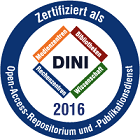Demie, Dereje Tamiru: Investigating the role of genotype, field design and environment in cereal/legume intercropping systems. - Bonn, 2025. - Dissertation, Rheinische Friedrich-Wilhelms-Universität Bonn.
Online-Ausgabe in bonndoc: https://nbn-resolving.org/urn:nbn:de:hbz:5-81875
Online-Ausgabe in bonndoc: https://nbn-resolving.org/urn:nbn:de:hbz:5-81875
@phdthesis{handle:20.500.11811/12989,
urn: https://nbn-resolving.org/urn:nbn:de:hbz:5-81875,
author = {{Dereje Tamiru Demie}},
title = {Investigating the role of genotype, field design and environment in cereal/legume intercropping systems},
school = {Rheinische Friedrich-Wilhelms-Universität Bonn},
year = 2025,
month = apr,
note = {Cropping system diversification through annual intercropping, such as cereal/legume, provides a pathway for agricultural production with reduced inputs of fertilizer and pesticides. However, a significant research gap still demands further investigation regarding understanding species/genotypes, field management, and their environmental interactions. However, testing all meaningful combinations (genotype x genotype x environment x management) is impossible and necessitates using agroecosystem models to understand and support intercropping design for improved resource use efficiency and gain an intended advantage. Previous studies on intercrop models have been limited by relatively small datasets, predominantly assessing aboveground plant growth and performance to evaluate the models. These studies often ignored different management strategies, such as cultivar choice and sowing densities.
To contribute to the understanding of how genotype × cropping system interactions affect mixture performance and identify the mechanisms underlying the interactions between genotype and cropping system. Furthermore, we calibrated and evaluated a new process-based intercrop model using an extensive experimental dataset to test whether the model is suitable for comparing intercrop management strategies. Additionally, we applied the model with field experiments to explore how the dynamics of crop resources, including radiation, water, and soil nitrogen (N) acquisition and use, drive productivity in intercropping systems across diverse environmental conditions.
The results highlight the importance of genotype selection for better cereal/legume intercropping productivity. The tested intercrop model was capable of simulating the absolute mixture (intercrop) effects (AME) for grain yield, above-ground biomass, and topsoil root biomass for both crops. Additionally, the intercrop model reasonably predicted the differences between species and between spring wheat cultivars for grain yield and aboveground plant biomass. This should be of particular interest as such models can also help to interpret experimental results regarding crop growth dynamics and resource acquisition. The assessment of resource acquisition and use efficiency by applying a calibrated and tested intercrop model showed that increased productivity of intercropping systems compared to monocultures was primarily driven by improved resource acquisition, particularly N uptake, and, to some extent, enhanced water use efficiency. However, the degree of these benefits was influenced by environmental conditions. Moreover, the robustly tested process-based model can be helpful in designing and pre-evaluating multiple combinations of partner species, genotypes, and management options suitable for intercropping in diverse environmental conditions.},
url = {https://hdl.handle.net/20.500.11811/12989}
}
urn: https://nbn-resolving.org/urn:nbn:de:hbz:5-81875,
author = {{Dereje Tamiru Demie}},
title = {Investigating the role of genotype, field design and environment in cereal/legume intercropping systems},
school = {Rheinische Friedrich-Wilhelms-Universität Bonn},
year = 2025,
month = apr,
note = {Cropping system diversification through annual intercropping, such as cereal/legume, provides a pathway for agricultural production with reduced inputs of fertilizer and pesticides. However, a significant research gap still demands further investigation regarding understanding species/genotypes, field management, and their environmental interactions. However, testing all meaningful combinations (genotype x genotype x environment x management) is impossible and necessitates using agroecosystem models to understand and support intercropping design for improved resource use efficiency and gain an intended advantage. Previous studies on intercrop models have been limited by relatively small datasets, predominantly assessing aboveground plant growth and performance to evaluate the models. These studies often ignored different management strategies, such as cultivar choice and sowing densities.
To contribute to the understanding of how genotype × cropping system interactions affect mixture performance and identify the mechanisms underlying the interactions between genotype and cropping system. Furthermore, we calibrated and evaluated a new process-based intercrop model using an extensive experimental dataset to test whether the model is suitable for comparing intercrop management strategies. Additionally, we applied the model with field experiments to explore how the dynamics of crop resources, including radiation, water, and soil nitrogen (N) acquisition and use, drive productivity in intercropping systems across diverse environmental conditions.
The results highlight the importance of genotype selection for better cereal/legume intercropping productivity. The tested intercrop model was capable of simulating the absolute mixture (intercrop) effects (AME) for grain yield, above-ground biomass, and topsoil root biomass for both crops. Additionally, the intercrop model reasonably predicted the differences between species and between spring wheat cultivars for grain yield and aboveground plant biomass. This should be of particular interest as such models can also help to interpret experimental results regarding crop growth dynamics and resource acquisition. The assessment of resource acquisition and use efficiency by applying a calibrated and tested intercrop model showed that increased productivity of intercropping systems compared to monocultures was primarily driven by improved resource acquisition, particularly N uptake, and, to some extent, enhanced water use efficiency. However, the degree of these benefits was influenced by environmental conditions. Moreover, the robustly tested process-based model can be helpful in designing and pre-evaluating multiple combinations of partner species, genotypes, and management options suitable for intercropping in diverse environmental conditions.},
url = {https://hdl.handle.net/20.500.11811/12989}
}






